 Last week, ten representatives of the major medical historical collections and museums in the Nordic and Baltic countries — i.e., Denmark, Estonia, Finland, Iceland, Latvia, Lithuania, Norway and Sweden — gathered for a two-day meeting in Uppsala, Sweden, with three aims in mind:
Last week, ten representatives of the major medical historical collections and museums in the Nordic and Baltic countries — i.e., Denmark, Estonia, Finland, Iceland, Latvia, Lithuania, Norway and Sweden — gathered for a two-day meeting in Uppsala, Sweden, with three aims in mind:
- to create a network between individuals and institutions in the Baltic-Nordic region about the development of medical and medical history museums.
- to identify important issues of common interest, like joint exhibitions, teaching programmes, acquisition projects, joint research projects, fund-raising, new museum development plans, etc.
- to discuss the best ways of strengthening the cooperation between Baltic-Nordic medical and medical history museums, university programmes for the history of medicine and medical science studies, and other regional and international professional organizations.
In an introductory three-hour roundtable we got an overview of the richness and variety of the historical collections, research programmes, exhibition projects and outreach activities in the medical museums in the region.
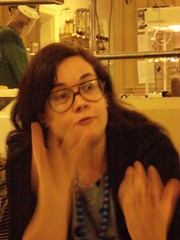 Lisa Mouwitz presented the Medical History Museum in Gothenburg, Sweden, a general history of medicine and health museum which is organisationally a part of the Sahlgrenska University Hospital.
Lisa Mouwitz presented the Medical History Museum in Gothenburg, Sweden, a general history of medicine and health museum which is organisationally a part of the Sahlgrenska University Hospital.
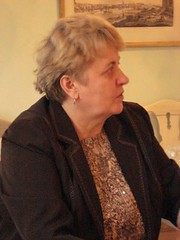 Maie Toomsalu told us about the collection management, research and outreach activities at the University of Tartu Medical Collections.
Maie Toomsalu told us about the collection management, research and outreach activities at the University of Tartu Medical Collections.
Morten Skydsgaard and Olav Hamran (behind)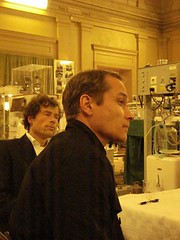 from the Steno Museum in Aarhus, Denmark, and the Norwegian Technical Museum in Oslo, respectively, shared their experiences of creating popular exhibitions for the general public about, for example, reproductive technologies.
from the Steno Museum in Aarhus, Denmark, and the Norwegian Technical Museum in Oslo, respectively, shared their experiences of creating popular exhibitions for the general public about, for example, reproductive technologies.
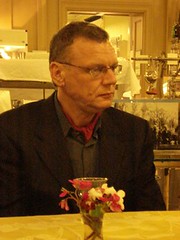 Juris Salaks presented the rich collections and manifold activities of the Paul Stradin Museum in Riga, Latvia.
Juris Salaks presented the rich collections and manifold activities of the Paul Stradin Museum in Riga, Latvia.
 Ramunas (‘Ray’) Kondratas, formerly curator of medical history at the National Museum of American History (Washington, DC), now retired in Lithuania, gave an overview of the two museums in Kaunas and Vilnius.
Ramunas (‘Ray’) Kondratas, formerly curator of medical history at the National Museum of American History (Washington, DC), now retired in Lithuania, gave an overview of the two museums in Kaunas and Vilnius.
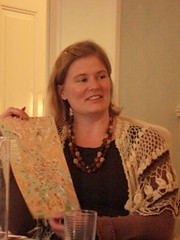
Anna Thorbjörg Torgrimsdottir told us about the exciting plans for an entirely new medical history museum in Iceland, close to the present Nesstofa in Seltjarnarnes outside Reykjavik.

Sigurd Sandmo, from The Leprosy Museum (part of Bergen City Museum), Norway, explained, among other things, how local lepra museums are engaged in an international co-operative network.
Finally, the writer of this humble post (who also held the camera) did his best to give an impression of what we are doing here at Medical Museion in Copenhagen.
(Unfortunately Henna Sinisalo from the Helsinki University Museum (Arppeanum), couldn’t attend the meeting).
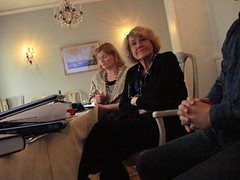 The meeting was hosted by Kerstin Hulter Åsberg, County Council of Uppsala, one of the co-founding bodies of the Medical History Museum in Uppsala. We also found time to visit this gem of a museum. where we were met by the chairman of the museum board, Henry Johansson, and its director, Eva Ahlsten.
The meeting was hosted by Kerstin Hulter Åsberg, County Council of Uppsala, one of the co-founding bodies of the Medical History Museum in Uppsala. We also found time to visit this gem of a museum. where we were met by the chairman of the museum board, Henry Johansson, and its director, Eva Ahlsten.
The next network meeting is planned to be held in Kaunas and/or Vilnius. Lithuania, in the autumn of 2009.
For further information about the new network, contact either Kerstin Hulter Åsberg (kerstin.hulter.asberg@lul.se) or me (Thomas Söderqvist, ths@sund.ku.dk).


